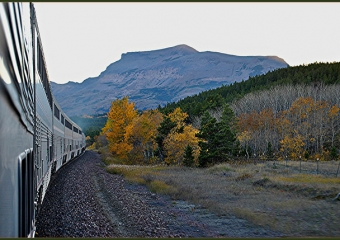

Photo by Loco Steve is licensed under CC BY 2.0
Amtrak has become an icon. More than 31 million riders depend on it and it is hard to imagine what will happen if the railway ceases to exist.
Since 1970, when Congress first authorized it, Amtrak has been on tenuous ground. It was created as a publicly funded, privately run, for-profit corporation and Congress hoped it would become self- supporting. That never happened. Supporters point out, however, that airlines, public transit and highways are all subsidized.
Congress now requires states to pick up a bigger part of the tab for all Amtrak routes shorter than 750 miles. That statute affects 19 states and nearly half of Amtrak’s ridership.
This is a bitter pill for states already dealing with reduced federal funding in other areas of transportation. Costs to the states rose from $186 million in 2013 to $238 million in 2014. The projection for 2015 funding is considerably higher and that is a red flag for many state leaders.
Illinois Gov. Bruce Rauner, deeply mired in wider-spread budget difficulties, does not have additional funds for Amtrak. Instead, he had hoped to reduce the state’s payments by $16 million. His situation is not unique.
Pennsylvania had to choose between servicing two parts of the state. A decision was made to let its more heavily traveled eastern half flourish and funding was allocated to only that part of the rail system.
Oregon’s legislature voted to increase its Amtrak funding by $10 million this year. But the message was clear – Amtrak must improve its offerings and counter a trend of diminishing ridership or the funding will stop. North Carolina owns the rail lines as well as the equipment in that state. It only contracts with Amtrak to operate the rail line. Riders there feel that their mode of travel is not in danger at the moment.
Many state legislatures are refusing to allocate additional funding. Some are considering other options for passenger rail needs. Indiana contracted with Iowa Pacific Holdings to provide some rail services. While Amtrak remains the primary operator, Iowa Pacific supplies equipment and services for on-board food and Wi-Fi. This is of interest because the company is considering an expansion that could include 12 trains a day and $500 million in upgrades. That will put additional pressure on Amtrak.
Many believe that private ventures will step in to fill the need for rail if Amtrak continues to limit its routes. At least, many hope that will happen.
For information on how to get involved in future transportation projects and funding give Strategic Partnerships, Inc. a call.
